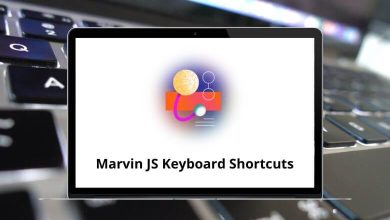Linux distributions come with pre-configured Linux Mint shortcuts. These shortcuts make your work much easier. The most commonly used shortcut in Linux is to shut down the system. For me, Ctrl + Alt + Delete
Listed below are several Linux Mint shortcuts that most Linux users use daily. You can download the Linux Mint shortcuts in PDF format.
General Linux Mint Shortcuts Action Linux Mint Shortcuts Open the Applications Menu Win Show desktop Win + D Open File Manager Win + E Open the run dialogue Alt + F12 Open a terminal Ctrl + Alt + T Undo Ctrl + Z Redo Ctrl + Y Copy selected item Ctrl + C Paste Ctrl + V Cut selected item Ctrl + X
Nemo File Manager Shortcuts Action Linux Mint Shortcuts New folder Ctrl + Shift + N Focus on the location bar Ctrl + L Navigate to the home directory Alt + Home Navigate up one directory Alt + Up Arrow key Navigate one directory forward Alt + Right Arrow key Navigate one directory back Alt + Left Arrow key Select all items Ctrl + A Invert selection Ctrl + Shift + I Open selected item Ctrl + O Open the selected item in the new tab Ctrl + Shift + O Properties of the selected item Alt + Enter Preview selected item Shift + Enter Rename selected item F2 Create a shortcut to the selected item Ctrl + M Delete selected item Delete Icon view Ctrl + 1 List view Ctrl + 2 Compact view Ctrl + 3 Show hidden files Ctrl + H Increase icon size Ctrl + = Decrease icon size Ctrl + – Reset icon size Ctrl + 0 Toggle Extra Pane F3 Toggle the Terminal in the top pane F4 Toggle left pane F9 Edit bookmarks Ctrl + B Add Bookmark Ctrl + D Cycle focus between panes F6 New tab Ctrl + T Switch to tab 1…9 Alt + 1…9 Next tab Ctrl + Page Up key Previous tab Ctrl + Page Down key Move tab left Ctrl + Shift + Page Up key Move tab right Ctrl + Shift + Page Down key Close tab Ctrl + W Find Ctrl + F New window Ctrl + N Open file menu F10 Open the plugin manager Alt + P Close all windows Ctrl + Q
Manage Windows Shortcuts Action Linux Mint Shortcuts Cycle through open windows on the current Workspace Alt + Tab Cycle through open windows of the same application on ANY Workspace Alt + ‘ Toggle Scale View Ctrl + Alt + Down Arrow key Toggle Expo view Ctrl + Alt + Up Arrow key Move to the left workspace Ctrl + Alt + Left Arrow key Move to the right workspace Ctrl + Alt + Right Arrow key Move the current window to the left workspace Ctrl + Alt + Shift + Left Arrow key Move the current window to the right workspace Ctrl + Alt + Shift + Right Arrow key
Current Application Window Shortcuts Action Linux Mint Shortcut Keys Close window Alt + F4 Unmaximize window Alt + F5 Resize window Alt + F7 Move window Alt + F8 Toggle maximize or unmaximize window Alt + F10 Open window menu Alt + Spacebar
Screenshots & Screen Recording Shortcuts Action Linux Mint Shortcut keys Take a screenshot Print Screen Copy a screenshot to the clipboard Ctrl + Print Screen Take a screenshot of the current window Alt + Print Screen Copy a screenshot of the current window to the clipboard Ctrl + Alt + Print Screen Toggle desktop recording Ctrl + Alt + Shift + R
Others Shortcuts Action Linux Mint Shortcut keys Lock screen Ctrl + Alt + L Log out Ctrl + Alt + Delete Open the Shut Down menu Ctrl + Alt + End Launch Linux Mint online to help F1 Restart Cinnamon Ctrl + Alt + Esc Re-detect display devices Win + P Toggle-looking glass debugging tool Win + L Restart the X server Ctrl + Alt + Backspace
The keyboard is and will always be mightier than the mouse because many actions or clicks can be accomplished with a single keyboard shortcut. Learning a handful of shortcuts can significantly increase your productivity. Windows users will refer to Windows XP keyboard shortcuts , just as Linux users refer to Linux Mint shortcut keys.
READ NEXT:





